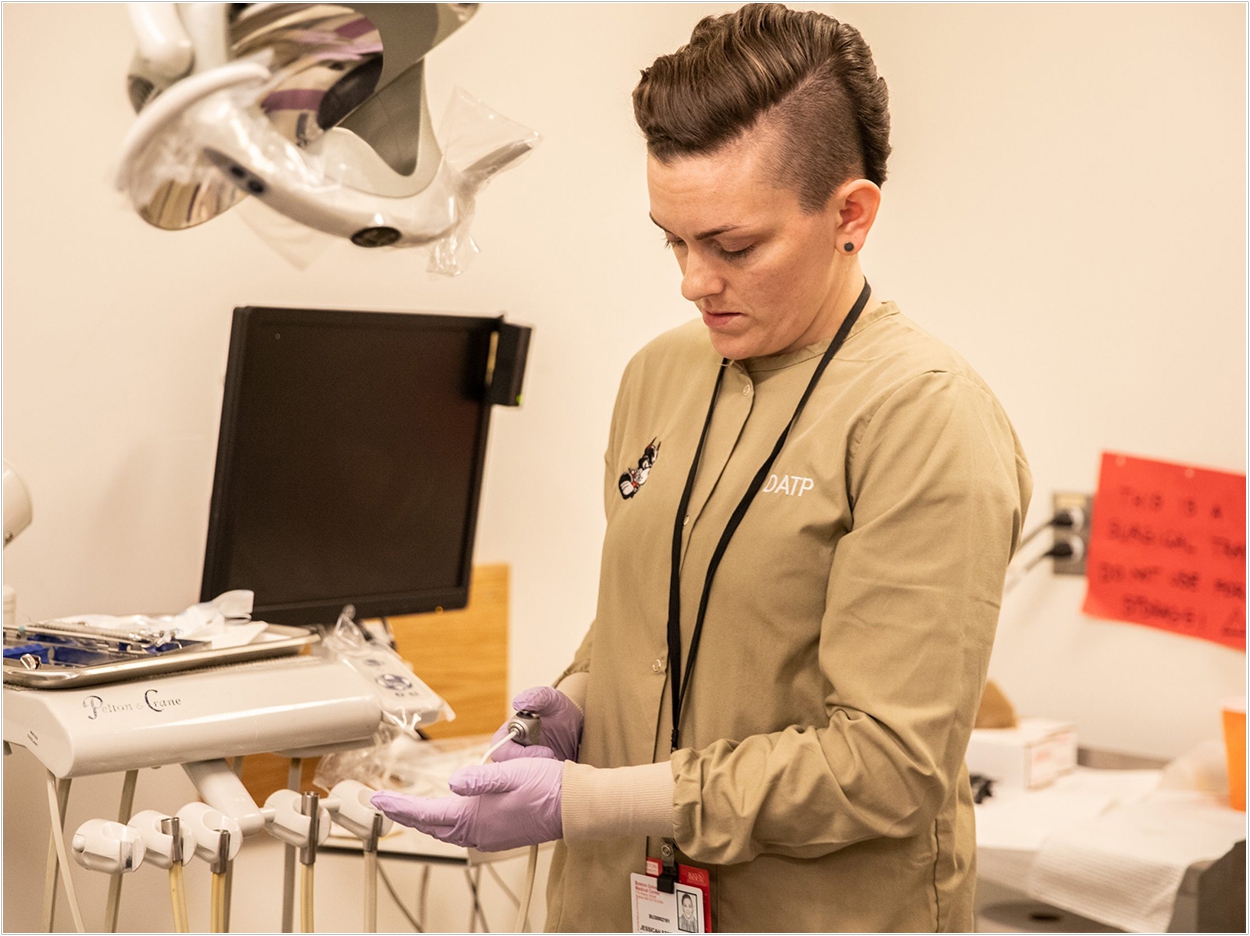
The Boston University Henry M. Goldman School of Dental Medicine (GSDM) nine-week dental assisting training program is designed to meet the rising demand for dental personnel. It graduates between 12 and 20 dental assistants each year.
“They’re there to help the dentist by anticipating their needs, preparing for procedures, and, if they’re a good assistant, actually allowing the dentist to do better dentistry,” said Dr. Margaret Errante, associate dean for quality management, compliance, and continuing education.
According to GSDM, dentists in states including North Dakota, Oregon, and Washington have reported difficulties in hiring dental assistants, though the Bureau of Labor Statistics (BLS) expects employment for dental assistants to grow 7% from 2019 to 2029, which is faster than the average for all occupations.
The aging population and ongoing research linking oral health and systemic health will lead to continued increases in the demand for preventive dental services, the BLS said.
There are two primary paths for becoming a dental assistant, Errante said, including completing a formal education program or receiving on-the-job training at a dental practice. The unique GSDM program offers a mixture of the two, the school said.
The program begins with four weeks of didactic work including courses on infection control, HIPAA, and science including anatomy. Students also take a basic life support course and a radiology course required for dental assistant licenses.
Next, students transition to the hands-on part of the program and have the opportunity to observe and to perform dental assisting.
One of the advantages of GSDM’s dental assisting program is the exposure it gives students to specialty programs like endodontics and pediatric dentistry, said Beetna Kim Baird, business manager in the GSDM Office of Continuing Education.
“Not only do [the students] learn directly from our faculty and our dental assistants, but they get experience in the specialty Patient Treatment Centers as well,” Baird said.
“They get to work with the GSDM predoctotal dental students as well,” said Joanne Kayden, a program supervisor in the GSDM Office of Continuing Education. “I think when they see others [dental students] learning, they observe the information that the faculty is telling the dental students as well.”
GSDM will continue to make resources available to dental assisting students after they complete the program, Baird said.
“We keep in touch with our past graduates, [when] we receive new jobs, people looking for dental assistants, and we’re also starting to provide CE courses [to them],” Baird said.
GSDM’s program, which was re-established in 2010, teaches students a significant amount of knowledge in a relatively short period of time, Errante said.
“We’re teaching them about dental instruments and materials, periodontal and restorative charting, dental terminology, a lot of the basic knowledge that gives them a tremendous head start,” Errante said. “It provides them with a very good foundational knowledge in a timeframe that makes sense for them.”
Related Articles
Three Reasons Why Now Is a Great Time to Become a Dental Assistant
California Campaign Aims to Recruit Dental Assistants
Scholarship Enables Marine Vet to Begin Career as a Dental Assistant












